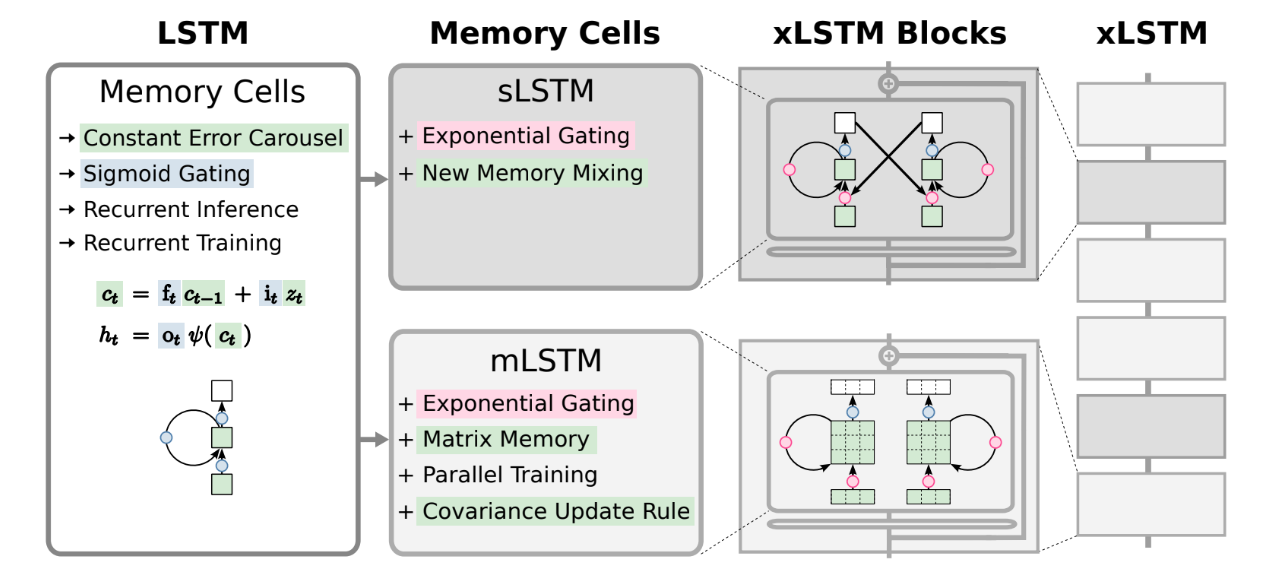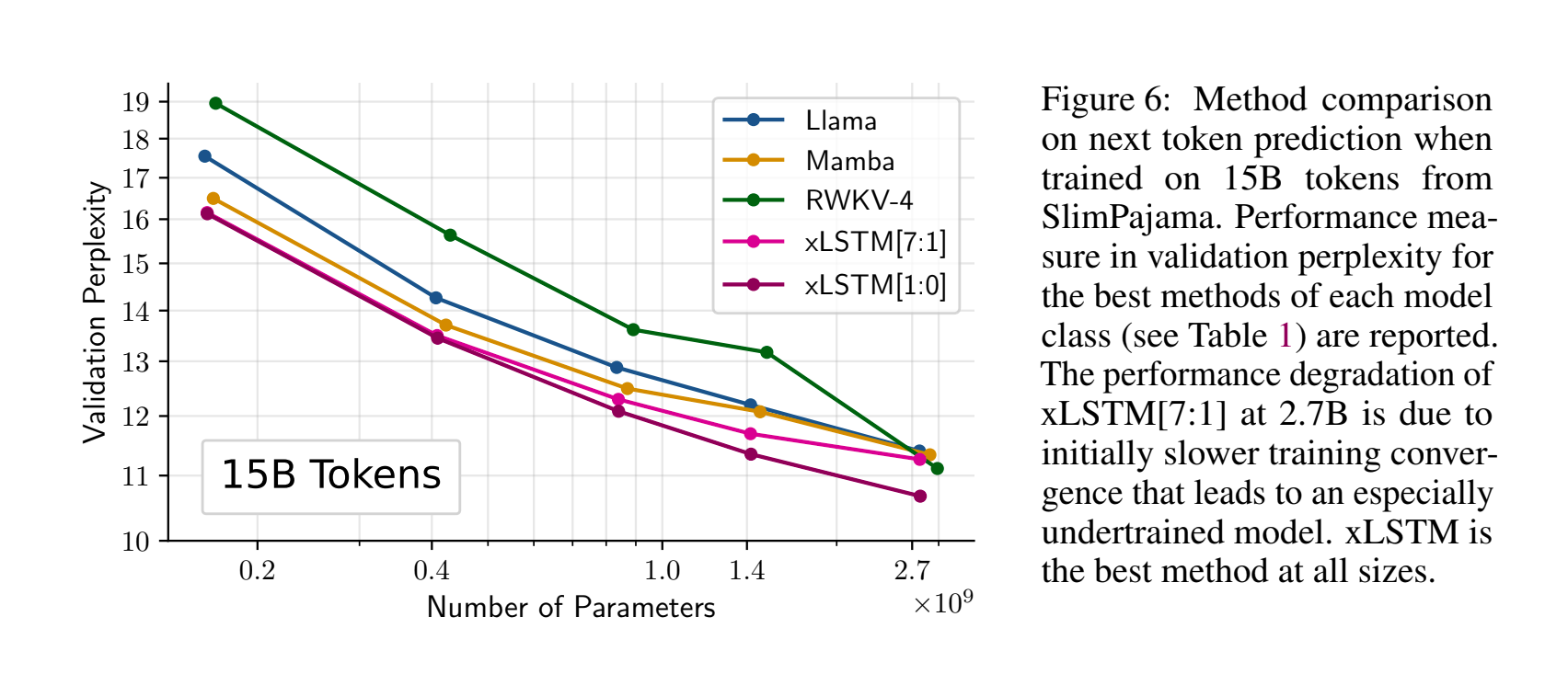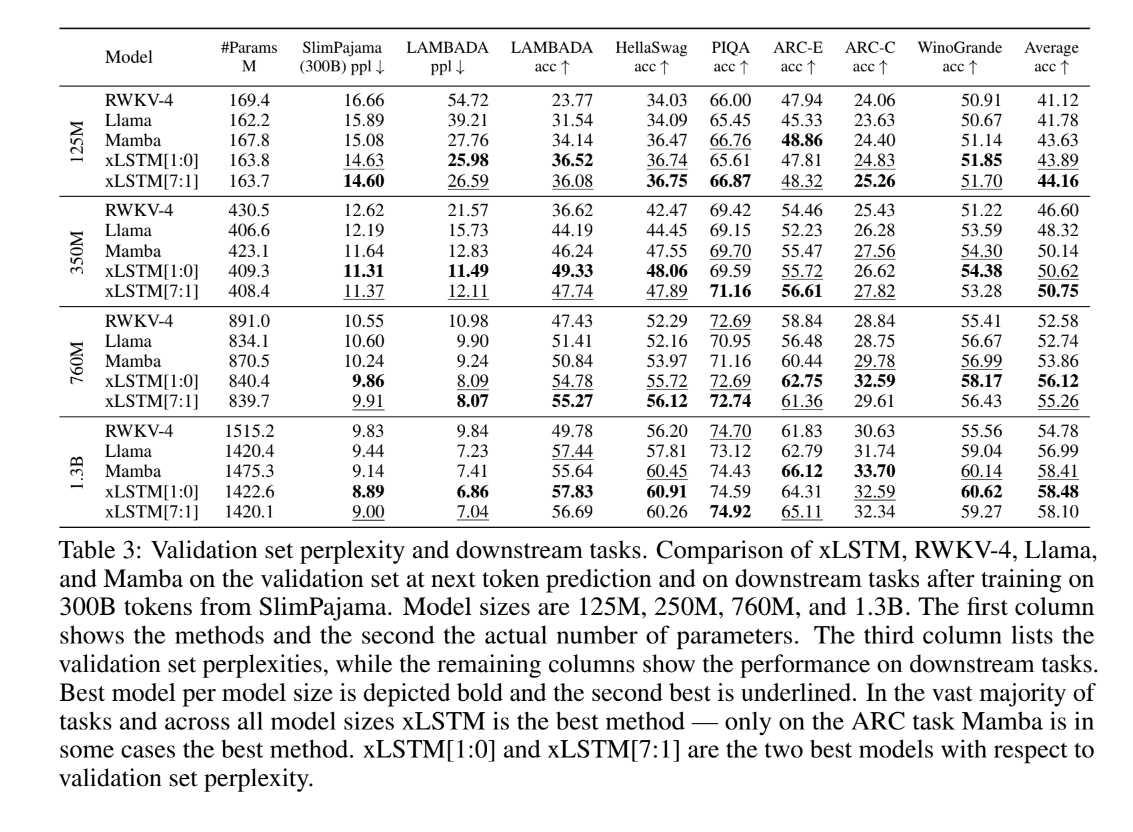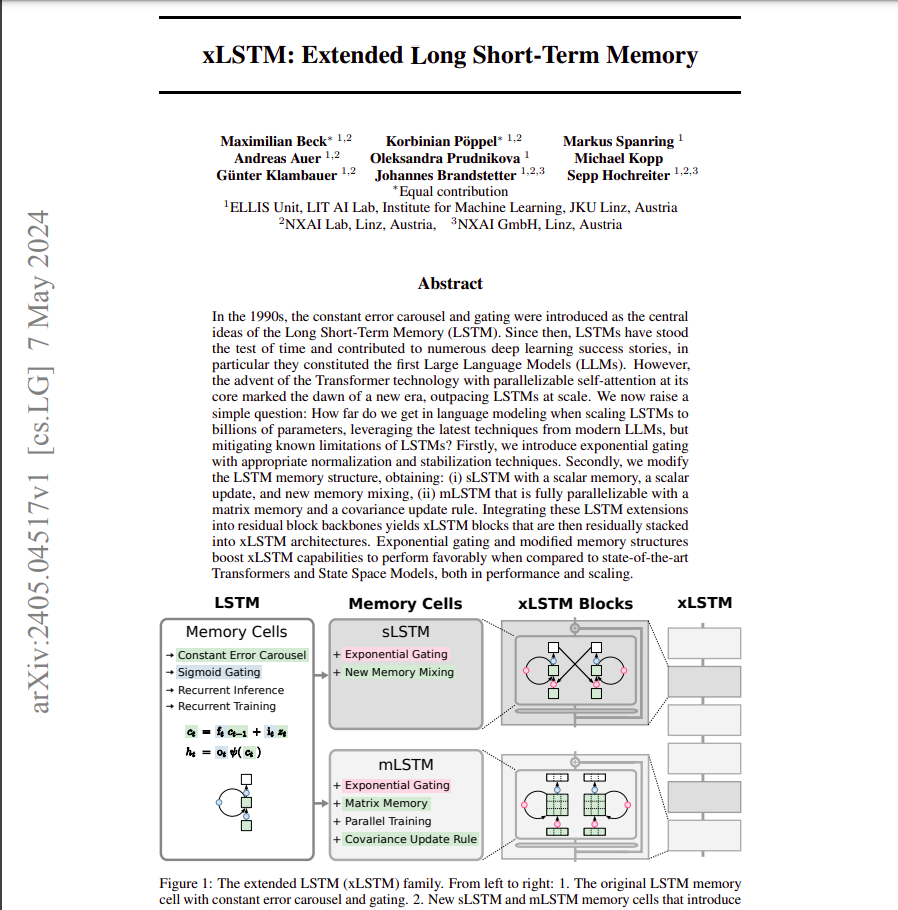Introduction
For years, a type of neural network called the Long Short-Term Memory (LSTM) was the workhorse model for handling sequence data like text. Introduced back in the 1990s, LSTMs were good at remembering long-range patterns, avoiding a technical issue called the “vanishing gradient” that hampered earlier recurrent networks. This made LSTMs incredibly valuable for all language tasks – things like language modeling, text generation, speech recognition, and more. LSTMs looked unstoppable for quite a while.
But then, in 2017, a new neural network architecture flipped the script. Called the “Transformer,” these models could crunch through data in hugely parallelized ways, making them far more efficient than LSTMs, especially on large-scale datasets. The Transformer started a revolution, quickly becoming the new state-of-the-art approach for handling sequences, dethroning the long-dominant LSTM. It marked a major turning point in building ai systems for understanding and generating natural language.
A Brief History of LSTMs
LSTMs were designed to overcome the limitations of earlier recurrent neural networks (RNNs) by introducing mechanisms like the forget gate, input gate, and output gate, collectively helping to maintain long-term memory in the network. These mechanisms allow LSTMs to learn which data in a sequence is important to keep or discard, enabling them to make predictions based on long-term dependencies. Despite their success, LSTMs began overshadowing by the rise of Transformer models, which provide greater scalability and performance on many tasks, particularly in handling large datasets and long sequences.
Why did Transformers Take Over?
Transformers took over due to the self-attention mechanism allowing them to weigh the significance of different words in a sentence, irrespective of their positional distance. Unlike RNNs or LSTMs, Transformers process data in parallel during training, significantly speeding up the training process. However, Transformers are not without limitations. They require large amounts of memory and computational power, particularly for training on large datasets. Additionally, their performance can plateau without continued model size and data increases, suggesting diminishing returns at extreme scales.
Enter xLSTM: A New Hope for Recurrent Neural Networks?
The xLSTM, or Extended LSTM, proposes a novel approach to enhancing the traditional LSTM architecture by integrating features such as exponential gating and matrix memories. These enhancements aim to address the inherent limitations of LSTMs, such as the difficulty of modifying stored information once written and the limited capacity in memory cells. By potentially increasing the model’s ability to handle more complex patterns and longer sequences without the heavy computational load of Transformers, xLSTMs might offer a new pathway for applications where sequential data processing is critical.

Understanding xLSTM
The Extended Long Short-Term Memory (xLSTM) model is an advancement over traditional LSTM networks. It integrates novel modifications to enhance performance, particularly in large-scale language models and complex sequence learning tasks. These enhancements address key limitations of traditional LSTMs through innovative gating mechanisms and memory structures.
How xLSTM Modifies Traditional LSTMs?
xLSTM extends the foundational principles of LSTMs by incorporating advanced memory management and gating processes. Traditionally, LSTMs manage long-term dependencies using gates that control the flow of information, but they struggle with issues such as memory overwriting and limited parallelizability. xLSTM introduces modifications to the standard memory cell structure and gating mechanisms to improve these aspects.
One significant change is the adoption of exponential gating, which allows the gates to adapt more dynamically over time, improving the network’s ability to manage longer sequences without the restrictions imposed by standard sigmoid functions. Additionally, xLSTM modifies the memory cell architecture to enhance data storage and retrieval efficiency, which is crucial for tasks requiring complex pattern recognition over extended sequences.
Demystifying Exponential Gating and Memory Structures
Exponential gating in xLSTMs introduces a new dimension to how information is processed within the network. Unlike traditional gates, which typically employ sigmoid functions to regulate the flow of information, exponential gates use exponential functions to control the opening and closing of gates. This allows the network to adjust its memory retention and forget rates more sharply, providing finer control over how much past information influences current state decisions.
The memory structures in xLSTMs are also enhanced. Traditional LSTMs use a single vector to store information, which can lead to bottlenecks when the network tries to access or overwrite data. xLSTM introduces a matrix-based memory system, where information is stored in a multi-dimensional space, allowing the model to handle a larger amount of information simultaneously. This matrix setup facilitates more complex interactions between different components of data, enhancing the model’s ability to distinguish between and remember more nuanced patterns in the data.

The Comparison: sLSTM vs mLSTM
The xLSTM architecture is differentiated into two primary variants: sLSTM (scalar LSTM) and mLSTM (matrix LSTM). Each variant addresses different aspects of memory handling and computational efficiency, catering to various application needs.
sLSTM focuses on refining the scalar memory approach by enhancing the traditional single-dimensional memory cell structure. It introduces mechanisms such as memory mixing and multiple memory cells, which allow it to perform more complex computations on the data it retains. This variant is particularly useful in applications where the sequential data has a high degree of inter-dependency and requires fine-grained analysis over long sequences.
On the other hand, mLSTM expands the network’s memory capacity by utilizing a matrix format. This allows the network to store and process information across multiple dimensions, increasing the amount of data that can be handled simultaneously and improving the network’s ability to process information in parallel. mLSTM is especially effective in environments where the model needs to access and modify large data sets quickly.
SLSTM and mLSTM provide a comprehensive framework that leverages the strengths of both scalar and matrix memory approaches, making xLSTM a versatile tool for various sequence learning tasks.
Also read: An Overview on Long Short Term Memory (LSTM)
The Power of xLSTM Architecture
The xLSTM architecture introduces several key innovations over traditional LSTM and its contemporaries, aimed at addressing the shortcomings in sequence modeling and long-term dependency management. These enhancements are primarily focused on improving the architecture’s learning capacity, adaptability to sequential data, and overall effectiveness in complex computational tasks.
The Secret Sauce for Effective Learning
Integrating residual blocks within the xLSTM architecture is a pivotal development, enhancing the network’s ability to learn from complex data sequences. Residual blocks help mitigate the vanishing gradient problem, a common challenge in deep neural networks, allowing gradients to flow through the network more effectively. In xLSTM, these blocks facilitate a more robust and stable learning process, particularly in deep network structures. By incorporating residual connections, xLSTM layers can learn incremental modifications to the identity function, which preserves the integrity of the information passing through the network and enhances the model’s capacity for learning long sequences without signal degradation.
How xLSTM Captures Long-Term Dependencies
xLSTM is specifically engineered to excel in tasks involving sequential data, thanks to its sophisticated handling of long-term dependencies. Traditional LSTMs manage these dependencies through their gated mechanism; however, xLSTM extends this capability with its advanced gating and memory systems, such as exponential gating and matrix memory structures. These innovations allow xLSTM to capture and utilize contextual information over longer periods more effectively. This is critical in applications like language modeling, time series prediction, and other domains where understanding historical data is crucial for accurate predictions. The architecture’s ability to maintain and manipulate a more detailed memory of past inputs significantly enhances its performance on tasks requiring a deep understanding of context, setting a new benchmark in recurrent neural networks.
Also read: The Complete LSTM Tutorial With Implementation
Does it Deliver on its Promises?
xLSTM, the extended LSTM architecture, aims to address the deficiencies of traditional LSTMs by introducing innovative modifications like exponential gating and matrix memories. These enhancements improve the model’s ability to handle complex sequence data and perform efficiently in various computational environments. The effectiveness of xLSTM is evaluated through comparisons with contemporary architectures such as Transformers and in diverse application domains.
Performance Comparisons in Language Modeling
xLSTM is positioned to challenge the dominance of Transformer models in language modeling, particularly where long-term dependencies are crucial. Initial benchmarks indicate that xLSTM models provide competitive performance, particularly when the data involves complex dependencies or requires maintaining state over longer sequences. In tests against state-of-the-art Transformer models, xLSTM shows comparable or superior performance, benefiting from its ability to revise storage decisions dynamically and handle larger sequence lengths without significant performance degradation.
Exploring xLSTM’s Potential in Other Domains
While xLSTM’s enhancements are primarily evaluated within the context of language modeling, its potential applications extend much further. The architecture’s robust handling of sequential data and its improved memory capabilities make it well-suited for tasks in other domains such as time-series analysis, music composition, and even more complex areas like simulation of dynamic systems. Early experiments in these fields suggest that xLSTM can significantly improve upon the limitations of traditional LSTMs, providing a new tool for researchers and engineers in diverse fields looking for efficient and effective solutions to sequence modeling challenges.
Also read: The Complete LSTM Tutorial With Implementation
The Memory Advantage of xLSTM
As modern applications demand more from machine learning models, particularly in processing power and memory efficiency, optimizing architectures becomes increasingly critical. This section explores the memory constraints associated with traditional Transformers and introduces the xLSTM architecture as a more efficient alternative, particularly suited for real-world applications.
Memory Constraints of Transformers
Since their introduction, Transformers have set a new standard in various fields of artificial intelligence, including natural language processing and computer vision. However, their widespread adoption has brought significant challenges, notably regarding memory consumption. Transformers inherently require substantial memory due to their attention mechanisms, which involve calculating and storing values across all pairs of input positions. This results in a quadratic increase in memory requirement for large datasets or long input sequences, which can be prohibitive.
This memory-intensive nature limits the practical deployment of Transformer-based models, particularly on devices with constrained resources like mobile phones or embedded systems. Moreover, training these models demands substantial computational resources, which can lead to increased energy consumption and higher operational costs. As applications of ai expand into areas where real-time processing and efficiency are paramount, the memory constraints of Transformers represent a growing concern for developers and businesses alike.
A More Compact and Efficient Alternative for Real-World Applications
In response to the limitations observed with Transformers, the xLSTM architecture emerges as a more memory-efficient solution. Unlike Transformers, xLSTM does not rely on the extensive use of attention mechanisms across all input pairs, which significantly reduces its memory footprint. The xLSTM utilizes innovative memory structures and gating mechanisms to optimize the processing and storage of sequential data.
The core innovation in xLSTM lies in its memory cells, which employ exponential gating and a novel matrix memory structure, allowing for selective updating and storing of information. This approach not only reduces the memory requirements but also enhances the model’s ability to handle long sequences without the loss of information. The modified memory structure of xLSTM, which includes both scalar and matrix memories, allows for a more nuanced and efficient handling of data dependencies, making it especially suitable for applications that involve time-series data, such as financial forecasting or sensor data analysis.
Moreover, the xLSTM’s architecture allows for greater parallelization than traditional LSTMs. This is particularly evident in the mLSTM variant of xLSTM, which features a matrix memory that can be updated in parallel, thereby reducing the computational time and further enhancing the model’s efficiency. This parallelizability, combined with the compact memory structure, makes xLSTM an attractive deployment option in environments with limited computational resources.

xLSTM in Action: Experimental Validation
Experimental validation is crucial in demonstrating the efficacy and versatility of any new machine learning architecture. This section delves into the rigorous testing environments where xLSTM has been evaluated, focusing on its performance in language modeling, handling long sequences, and associative recall tasks. These experiments showcase xLSTM’s capabilities and validate its utility in a variety of scenarios.
Putting xLSTM to the Test
Language modeling represents a foundational test for any new architecture aimed at natural language processing. xLSTM, with its enhancements over traditional LSTMs, was subjected to extensive language modeling tests to assess its proficiency. The model was trained on diverse datasets, ranging from standard benchmarks like Wikitext-103 and larger corpora such as SlimPajama, which consists of 15 billion tokens. The results from these tests were illuminating; xLSTM demonstrated a marked improvement in perplexity scores compared to its LSTM predecessors and even outperformed contemporary Transformer models in some scenarios.
Further testing included generative tasks, such as text completion and machine translation, where xLSTM’s ability to maintain context over longer text spans was critical. Its performance highlighted improvements in handling language syntax nuances and capturing deeper semantic meanings over extended sequences. This capability makes xLSTM particularly suitable for automatic speech recognition and sentiment analysis applications, where understanding context and continuity is essential.
Can xLSTM Handle Long Sequences?
One of the significant challenges in sequence modeling is maintaining performance stability over long input sequences. xLSTM’s design specifically addresses this challenge by incorporating features that manage long-term dependencies more effectively. To evaluate this, xLSTM was tested in environments requiring the model to handle long data sequences, such as document summarization and programming code evaluation.
The architecture was benchmarked against other models in the Long Range Arena, a testing suite designed to assess model capabilities over extended sequence lengths. xLSTM showed consistent strength in tasks that involved complex dependencies and required the retention of information over longer periods, such as in the evaluation of chronological events in narratives or in controlling long-term dependencies in synthetic tasks modeled to mimic real-world data streams.

Demonstrating xLSTM’s Versatility
Associative recall is another critical area where xLSTM’s capabilities were rigorously tested. This involves the model’s ability to correctly recall information when presented with cues or partial inputs, a common requirement in tasks such as question answering and context-based retrieval systems. The experiments conducted employed associative recall tasks involving multiple queries where the model needed to retrieve accurate responses from a set of stored key-value pairs.
In these experiments, xLSTM’s novel matrix memory and exponential gating mechanisms provided it with the ability to excel at recalling specific information from large sets of data. This was particularly evident in tasks that required the differentiation and retrieval of rare tokens or complex patterns, showcasing xLSTM’s superior memory management and retrieval capabilities over both traditional RNNs and some newer Transformer variants.
These validation efforts across various domains underscore xLSTM’s robustness and adaptability, confirming its potential as a highly effective tool in the arsenal of natural language processing technologies and beyond. By surpassing the limitations of previous models in handling long sequences and complex recall tasks, xLSTM sets a new standard for what can be achieved with extended LSTM architectures.
Conclusion
xLSTM revitalizes LSTM-based architectures by integrating advanced features like exponential gating and improved memory structures. It is a robust alternative in the ai landscape, particularly for tasks requiring efficient long-term dependency management. This evolution suggests a promising future for recurrent neural networks, enhancing their applicability across various fields, such as real-time language processing and complex data sequence predictions.
Despite its enhancements, xLSTM is unlikely to fully replace Transformers, which excel in parallel processing and tasks that leverage extensive attention mechanisms. Instead, xLSTM is poised to complement Transformers, particularly in scenarios demanding high memory efficiency and effective long-sequence management, contributing to a more diversified toolkit of ai-language models.
For more articles like this, explore our blog section today!






